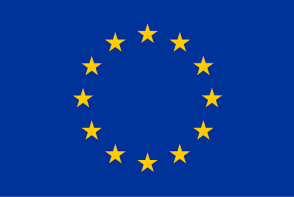Figure 1: nuMIDAS model – Service-oriented architecture
The mobility ecosystem is evolving rapidly, whereby we observe the rise of new stakeholders and services. On top of that, new services (e.g., shared mobility, electric infrastructure management, and MaaS) operate in an environment in which traditional services (e.g., public transport, last mile logistics, and travel demand modelling) are well established. The enormous amount of gathered data by municipalities, service providers, and other related or unrelated parties is the key to the ability to make these complex choices. Successfully integrating all these various technologies and solutions for designing the transport system and policies remains a challenge.
The first specialised task of the nuMIDAS project was the state-of-the-art assessment of traditional research methods and tools supporting transport/mobility researchers, planners, and policy makers. The results of this task are presented in Deliverable 2.1 (available through this link). The state-of-the-art analysis adopts a broader look at the mobility environment and focuses on a service-oriented approach.
Stakeholders (e.g., public transport operators) have certain Goals (e.g., environmental sustainability) that are addressing Challenges (e.g., estimate and reduce the emissions) within a city or their domain. In order to tackle those Challenges, they apply certain Services (e.g., public transport management). The Services can be rather large; therefore, it may consist of several Use cases (e.g., priority management). Methods and Tools (e.g., microscopic simulation) can be used to determine the impacts and optimise planning and operations of the service. Data sources (e.g., city sensors) may input Data/Variables (e.g., travel demands) in the Methods and Tools, which will generate outputs for KPIs (e.g., travel times, queue length, or CO2 emissions). These KPIs can be incorporated into a Dashboard to show, for instance, changes in different scenarios. In this way, stakeholders can decide on the suitable Policy instruments that address multiple Goals.
Based on the state-of-the-art analysis, we list the identified relevant mobility services in scope of nuMIDAS (see below Table 1)
| Service name | Service Description | |
| 1 | Transportation Data Analysis | Analysis of data from multiple sources (e. g. transport infrastructure, location-based applications) to get insights into traffic |
| 2 | Transportation Policy and Design | Appraisal and identification of the most appropriate policies, investments, and urban design to optimise transport systems. |
| 3 | Travel Demand Modelling | The prediction of future travel patterns from a sample of travel behaviour data. |
| 4 | Public Transport Management | Organisation of public transport to better respond to travel demand by improving the flow of passengers at an acceptable level of service. |
| 5 | Last Mile Logistics | Represent the last leg of a journey comprising the movement of goods from a transportation hub to a final destination. |
| 6 | Rental | Service that allows people to rent a vehicle for a shorter or longer period of time. |
| 7a | Shared Mobility: Micromobility | Demand-driven sharing arrangement of small and lightweight vehicles at operating at speeds typically below 25 km/h. |
| 7b | Shared Mobility: Car | Demand-driven vehicle-sharing arrangement, in which travellers share a vehicle either simultaneously as a group or over time. |
| 8 | Mobility as a Service (MaaS) | Service that brings every kind of transport together into a single intuitive mobile app, handling everything from travel planning to payments. |
| 9 | C-ITS and CAV Integration | Exploitation of enhanced connectivity among vehicles road infrastructure as well as vehicle automation provide coordinated traffic management. |
| 10 | Electric Infrastructure Management | The concept of using electric powertrain technologies and the necessary infrastructure either to charge batteries or refuel hydrogen tanks. |
| 11 | Parking Management | The optimisation of parking space through several solutions. |
| 12 | Ride-Hailing and Ride-Sharing | The concept of a rider hiring a personal driver to take him/her exactly where he/she needs to go, either sharing or not the ride with others. |
We believe that the results of this state-of-the-art analysis have the potential to become a useful mean for various stakeholders, especially as it updates and enhances existing white papers and reports covering the mobility field. For each of the identified services in scope of the nuMIDAS project, the analysis includes definitions, trends, opportunities and gaps in existing tools and methods, related policy instruments, high-level use cases, solved challenges, outputs and KPIs. This state-of-the-art analysis can be the ultimate resource within the changing mobility environment.





